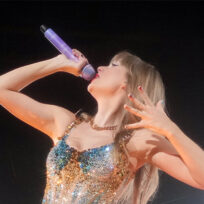Last week, most people flipped the f*ck out when WW (formerly Weight Watchers) announced it had purchased and was relaunching the app Kurbo, aimed for kids ages 8-17. While WW insisted the app was not a weight loss app, many people (us) felt like WW was not being completely transparent, and the app was just a thinly veiled weight loss app. Gary Foster, the chief scientific officer at WW International, called Kurbo “an app that teaches in a game-ified, fun, engaging way what are the basics of a healthy eating pattern.” But in an official statement, WW referred to Kurbo as a “scientifically-proven behavior change program designed to help kids and teens age 8-17 reach a healthier weight.” Hmm, so which is it? Are we teaching kids to lose weight or nah?
Kurbo uses a “traffic light system” to classify foods as red, yellow, and green. App users can play games to determine which category various common foods fall under, and there’s also a tracking component where they can record the foods they’ve eaten. As someone who did Weight Watchers as a “kid” (I was like, 15 or 16), I was initially torn when news about this app came out. On the one hand, the CDC claims childhood obesity has more than tripled since the 1970s, and nearly 1 in 5 kids aged 6-19 are obese. I would have probably done Kurbo in 10th grade when I went on Weight Watchers. On the other hand, kids already have body image issues, and appealing to that and encouraging weight loss for literal 8-year-0lds is pretty ridiculous and premature, and as many pointed out, it could promote or lead to disordered eating. So I decided to download the app to see for myself, and honestly? It’s worse than I thought.
I downloaded Kurbo, input my information (I pretended I was a 4’8″ kid who weighed 100 pounds, which is technically classified as overweight). Then I played a game called “Red Raisins”, where the app shows you pictures of various foods and then you have to determine which are red, yellow, and green through a variety of exercises. (Sometimes you’ll drag a fork to the “green” food, sometimes you’ll erase the “yellow food”—stuff like that.) Not going to lie, the game was actually pretty fun and may replace my desk habit of mindlessly scrolling through dating apps. However, I was seriously gobsmacked at some of Kurbo’s classifications. The green and red foods didn’t surprise me (carrots are green; fried chicken is red), but the yellow foods were another story.
From the Kurbo app, green foods mean “healthy foods—eat up!”, yellow means “watch portions”, and red means “eat 4 or fewer” (I guess per day, though it doesn’t specify). Seems like a pretty logical and intuitive system, until you get to what Kurbo considers foods you should watch your portions for.

Baked chicken breast?? Are you sure?? The same baked chicken breast annoying fitness bros swear by? Surely that baked chicken breast cannot be a food kids need to watch out for. And, to be clear, this is chicken without skin. Now, here’s the crazy part. I am on Weight Watchers (I’m Lifetime, which means I’m not losing anymore, I’m just maintaining), which works on a points system. Basically, depending on factors like your height, goal weight, age, whether or not you are pregnant, etc., you get a daily allowance of points per day. Each food (and beverage) has a certain points value, depending on things like calories, protein, sugar, carbs, etc. Guess how many points chicken breast is on the WW app. No, really. Guess.
Zero. Zero f*cking points. Don’t believe me? Here’s a screenshot from my app:

I don’t know what psychos are eating raw chicken breast, but the point is that adults can eat a serving of chicken breast and not have it count towards their daily points allowance. So why are we telling kids that this is not a “safe” food? If anything, you would think we would be more lenient towards kids, who are still growing and developing. But nope! Stay away from the chicken breast, children!

Check this out! Unsweetened applesauce is a yellow light food on Kurbo. Now, I kind of get that, because obviously no kid (or person) should be eating, like, 10 pounds of applesauce per day, sweetened or not. But, and you’re probably getting better at this game now, guess how many points WW assigns to 1/2 cup of unsweetened applesauce?

Correct! Zero points!
Even crazier? A baked chicken sandwich (which they depict as baked chicken with lettuce and tomato on a bun—no cheese) is a red food. That’s wild, considering that in my WW meetings, we always say that a grilled or baked chicken sandwich is a pretty safe option when you’re going out to eat. Crab is a yellow food, when lump crab meat is zero points on WW. It just doesn’t make sense.
To be fair to Kurbo, some of the games were helpful. I played one that had you guess what proper serving sizes are for foods, using things like the palm of your hand for reference. That’s useful, considering most people can’t properly eyeball 3 oz. of meat or 1/4 cup of nuts or whatever. But the food classifications were another story. You would think that an app owned and run by WW would be consistent for children and adults. You’d also think, again, that they would be more forgiving for children, because they’re growing and I’d venture that kids are generally more active than adults. But nope! You’d be wrong on both accounts. Instead of teaching children how to make healthy choices (a goal I kind of take issue with in the first place, since a lot of the time children don’t have much control over what they’re eating, and it’s up to the parents to provide healthy meals for them), we are teaching children to demonize the same foods that adults are permitted to eat freely! To borrow from Ramona Singer, wow. Wow, WW. Wow.
Images: Dan Gold / Unsplash; Kurbo (2); WW (2)




















































